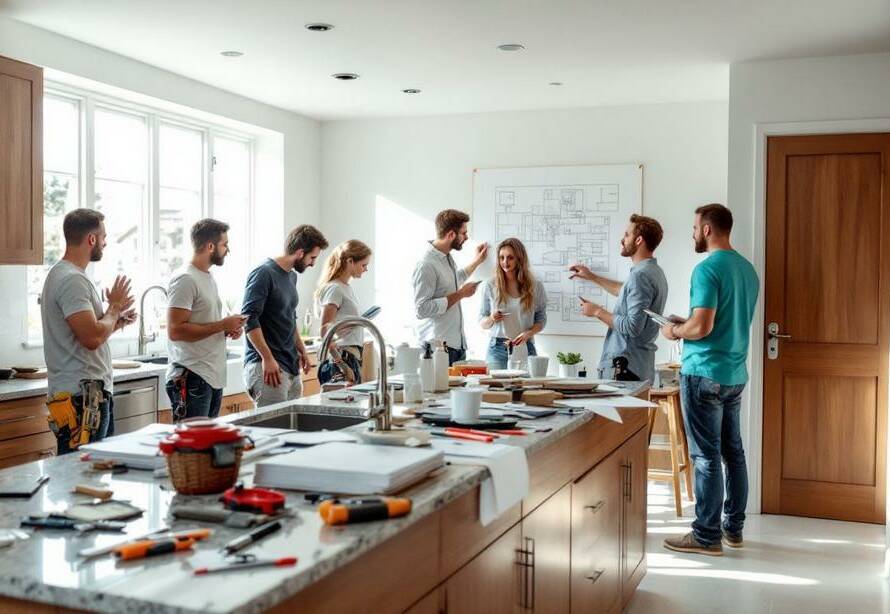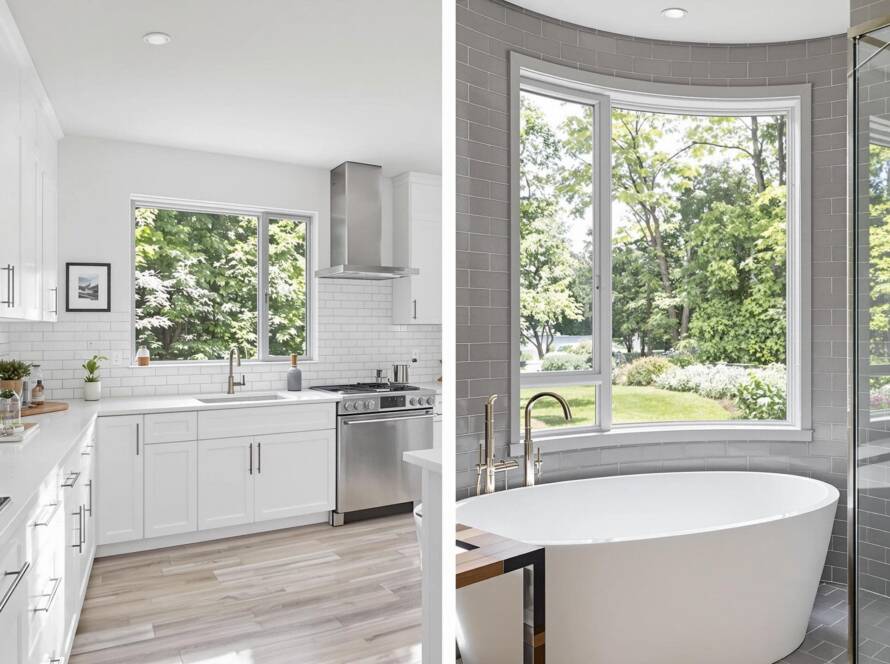Choosing the best paint colors for kitchens and bathrooms isn’t just about aesthetics — it’s about functionality, mood, and how light interacts with your space. These two high-traffic areas of your home require smart design decisions that balance beauty with practicality. And here’s the kicker: lighting plays a massive role in how a paint color actually looks on your walls.
Lighting can make that soft gray suddenly look blue or turn your crisp white into something that feels sterile. Whether it’s the soft warmth of incandescent bulbs or the clarity of natural daylight pouring through a window, each lighting source affects how we perceive color — and that’s crucial when you’re trying to create a kitchen or bathroom that feels just right.
This guide will break down how to pick the right hues for these important spaces — ones that not only look great in the store but also shine in your unique lighting conditions at home.
TLDR – Quick Guide
- Natural lighting can warm up or cool down color tones depending on the time of day.
- North-facing rooms benefit from warmer shades; south-facing rooms can handle cooler tones.
- Artificial light (LED, incandescent, fluorescent) can dramatically shift how colors appear.
- Kitchens do well with warm neutrals, soft greens, and creamy whites.
- Bathrooms benefit from spa-like blues, light grays, and soft beiges.
Detailed Breakdown
Understanding Lighting Types
Natural Light
The direction your windows face matters.
- North-facing: These tend to be cooler and darker — lean into warm tones like taupe or buttery cream.
- South-facing: These rooms get consistent light all day, so they’re versatile — soft blues, grays, and whites work beautifully.
- East-facing: Morning light gives a soft golden tone, ideal for cool colors that won’t get washed out.
- West-facing: These rooms get intense evening light — muted tones like sage or warm beige balance the richness.
Artificial Light
- Incandescent lighting adds warmth — use cooler paint tones to balance.
- LEDs vary in color temperature, so match paint with the bulb’s output (warm LEDs pair well with taupe and terracotta, cooler LEDs suit crisp whites and grays).
- Fluorescent lighting can lean green or blue, so steer toward warmer undertones in your paint.
Best Paint Colors for Kitchens
Kitchens need energy, warmth, and cleanliness — but also a little personality.
- Soft whites and creams: Brighten small kitchens and make them feel open.
- Warm grays and taupes: Create a neutral base with more depth.
- Light greens and pale blues: Add freshness and a pop of color without overwhelming.
Pro Tip: Avoid high-sheen paints in kitchens unless you want every fingerprint on display. Eggshell or satin finishes strike a good balance between cleanability and aesthetics.
Best Paint Colors for Bathrooms
Bathrooms are often smaller, moisture-heavy, and depend more on artificial light.
- Pale grays: Create a modern, spa-like atmosphere.
- Soft blues and seafoam greens: Offer a calming, clean feel.
- Greige (gray + beige): Brings warmth and neutrality in one.
Don’t forget ventilation! Paints labeled “bathroom-safe” or mildew-resistant are worth the investment.
Key Takeaways
- Lighting significantly changes how paint colors appear — always test samples in your actual space.
- Kitchens benefit from warm, neutral tones that balance cleanliness with comfort.
- Bathrooms look best in calming, light hues that make the space feel larger and more open.
- Match your paint undertones with your lighting type — warm with cool, cool with warm, or complementary for contrast.
- Always choose the appropriate finish — matte for subtlety, satin for cleanability.
FAQs
- How do I test paint colors before committing?
Use large sample swatches or paint a small section of your wall. View it at different times of day to see how it looks under various lighting conditions. - Should I use the same paint color in the kitchen and bathroom?
Not necessarily. It’s more effective to choose colors based on the unique lighting and size of each room. However, using complementary tones can help create a cohesive flow. - Are dark colors a bad idea for small bathrooms or kitchens?
Not always! Deep colors like navy or charcoal can add drama, especially when paired with good lighting and lighter accents. Just use them strategically to avoid overwhelming the space. - What finish is best for high-moisture areas like bathrooms?
Satin or semi-gloss finishes work best in bathrooms because they’re more resistant to moisture and easier to clean than matte finishes. - Do trends matter when choosing paint colors?
Trends can be helpful inspiration, but focus on what works in your home’s light and layout. Classic, timeless tones usually hold up better over time.


